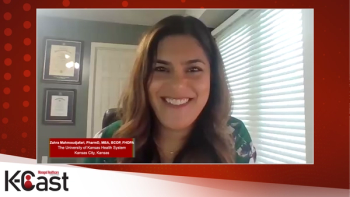
How Poverty Affects Blood Cancer Patients
The study looked at cancer patients as a group, but senior author notes that ‘that treatments for blood cancers are very costly and many of them require treatment for long periods of time.’
A significant number of cancer survivors are living in poverty, which can harm their physical and mental well-being, according to new research.
Jorge Cortes, M.D., director of the Georgia Cancer Center at the Medical College of Georgia and senior author of the paper published in JCO Oncology Practice, and the research team found that 12% of around 28,000 cancer survivors are living in poverty.
The financial impact of treatment not only affects the treatment of the cancer itself, but carries over after treatment is over, Cortes said in interview with Managed Healthcare Executive®.
“Patients may end up with residual debt and consequences that affect their long-term health —physical, mental and social,” Cortes said. "As better treatments are being developed, affordability and access is becoming a greater need. We all have a responsibility to address all patients’ needs, not only those who can afford the best treatments or who can reach a clinical trial.”
Many cancer treatments total $100,000 or more annually, and without health insurance, those costs can be entirely out-of-pocket, Cortes wrote in the study.
“We are always focused on curing cancer. That is our goal. That is our first objective when we are finding therapies and discussing treatment options and executing the treatment plan,” Cortes said in a
The research team utilized the Centers for Disease Control and Prevention’s Behavioral Risk Factor Surveillance System, which contains data from people across the U.S. regarding health-related risk behaviors, chronic health conditions and their use of preventive services.
The prevalence of self-reported poor health conditions was significantly higher among low-income cancer survivors compared with higher-income survivors : 59% for low-income survivors versus 27% for higher-income individuals. Low-income survivors were also more than three times as likely to report the inability to see a doctor because of the associated cost.
The researchers also found a 42% lower odds ratio of not having health insurance for low-income cancer survivors compared with higher-income survivors.
“There is an association between financial hardship and worse symptoms, increased pain, psychological distress, poorer quality of life and higher mortality,” Cortes wrote.
While this study did not focus on any specific cancer, “we expect that the data fully represents what we see in patients with blood cancers,” Cortes told Managed Healthcare Executive®.
“We do know that treatments for blood cancers are very costly and many of them require treatment for long periods of time — possibly indefinitely at a great cost for them,” Cortes said. “Even if the patient is only responsible for a portion of the cost, since the total cost is so high, a fraction of the cost still represents a significant burden for many patients.”
The cost of therapy “greatly impacts the treatment” patients receive, Cortes added. "If you have to adjust to what is most affordable, or to the drugs that have the most supportive assistance programs for patients, or what the insurance company covers, many times you may not be using what your first choice may be — what you think gives a patient the best probability of a good outcome. Unfortunately, the patients with lower incomes are the most affected by this unfortunate circumstance.”
To help combat the problem, healthcare providers should screen oncology patients for financial hardship at the first visit and, when necessary, refer them to appropriate resources like social workers and financial counselors, the authors suggested.
“We need to make sure there are support networks for patients who have survived cancer, not just those who have cancer,” Cortes said. “We need to develop more awareness of what comes next, which is what this paper is doing, and then try to develop those support networks and structures.”
Newsletter
Get the latest industry news, event updates, and more from Managed healthcare Executive.


















































